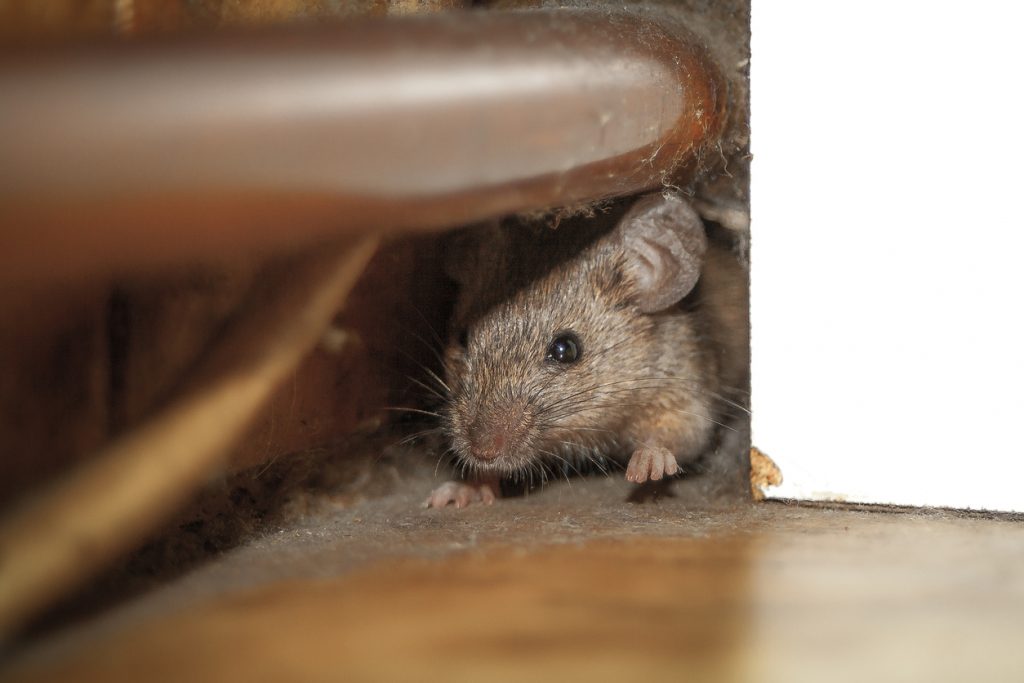Rodents pose a nasty problem for homeowners throughout Texas. These elusive nocturnal creatures invade food supplies, cause extensive property damage, leave their droppings in living areas, and even carry and spread diseases.
While it’s not likely that you can have mice and rats at the same time (rats often feed on mice — the scent of a rat is enough to drive mice away), the presence of either one requires immediate attention.

How to Tell If You Have Mice or Rats in Your Home
If you want to get rid of these destructive pests, you first need to determine whether you’re living with mice or rats. Each has different characteristics that impact the removal process.
If you have rodents in your home, it’s probably one of the three types — roof rats, Norway rats (less common) or house mice. You can often distinguish between these three by their appearance. But since you don’t always see them, you can use other methods to identify your household rodent.
Request Rodent Removal Services ➔
Appearance
Size is one of the easiest ways to tell the difference between mice and rats.
Rats are much larger — an adult Norway rat can measure 12-18 inches from snout to tail, while a roof rat is typically 8-10 inches and has a longer tail. At around 6-7 inches, a house mouse is much smaller.
Mice are typically whitish-gray or brown and have triangular snouts and large, floppy ears. Norway rats have brownish-gray coats, while their roof brethren have black coats and light-colored underbellies.
It’s much harder to distinguish between juvenile rats and mice because of their similar size. If the rodent’s head and paws appear too large for its body, it’s probably a young rat.
Living Habits
In general, both rats and mice can thrive in various climates and environments around the world. Mice prefer to build nests close to the ground and within a short distance from food sources.
Norway rats are excellent diggers and often burrow underground when seeking shelter. You could come across a nest in your home’s foundation or outdoors in trash piles and other convenient hiding spots. They find their way inside through pipes, vents or cracks.
As their name implies, roof rats access and enter a building’s roof area via tree branches, power lines, or even climbing the siding of your home.
These rodents are resourceful when it comes to finding a safe place to live inside your home. A rat or mouse in the attic is not uncommon, and they’re also quite comfortable in walls, crawl spaces, basements and other remote areas.

Eating Habits
Rats and mice are opportunistic eaters — it’s crucial to keep all food sources sealed, or else they’ll surely find it. They do have slightly different tastes in cuisine.
Mice generally prefer carbo-loading on items such as bread, cereal, and bagels, with a little meat thrown in for variety.
Rats are less likely to enter a living space for food — they prefer foraging outside. While roof rats typically consume smaller portions than Norway rats, both have healthy appetites. Besides devouring whatever they find in your house, they prey on mice, birds, lizards and insects. They also eat chicken eggs and are even cannibalistic.
Rat vs. Mouse Droppings
Another way to tell the difference between mice and rats is the size, shape, and color of their droppings.
Rat droppings are black, shiny, brick-like pellets measuring up to .75 inches. Norway rat droppings have blunt ends, while roof rat dropping ends are more pointed and have a slight curve along the length. Mice droppings measure about .25 inches and also have pointy ends.
Breeding
Mice and rats are prolific breeders. A female house mouse can produce 7-8 litters per year consisting of 4-16 babies. A female Norway rat can have 3-12 litters of up to 22 babies, while a roof rat has up to three litters of 5-8 offspring.
Contact Urban Jungle Wildlife Removal for Help With Your Rodent Problem
Don’t let rats or mice take over your Texas home. Contact the experienced rodent removal professionals at Urban Jungle Wildlife Removal right away! We’ll treat your home like our own and make sure rodents trouble you no longer.
